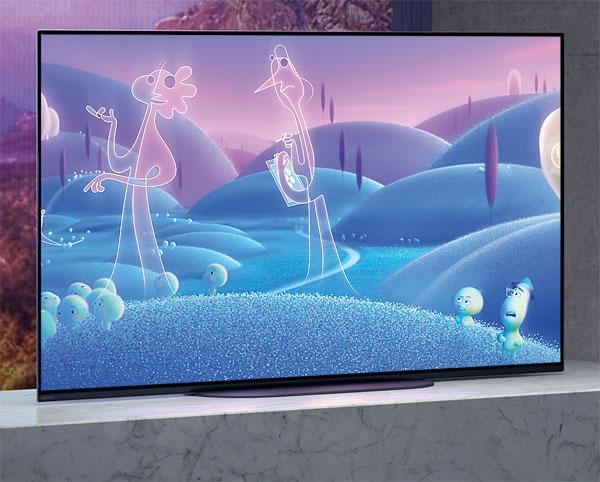Sony KD-48A9 OLED 4K TV Review

 Sony's smallest ever OLED TV won't excite the gaming console cognoscenti, but its images still make a big impression on John Archer
Sony's smallest ever OLED TV won't excite the gaming console cognoscenti, but its images still make a big impression on John Archer
The general TV trend these days is towards ever bigger screens. An interesting exception to this rule has emerged in recent months, though, in the comely shape of 48in OLED TVs.
LG kicked things off last year with its OLED48CX, but now Sony, too, is jumping into the market for smaller OLEDs with the KD-48A9.
Sony's debut 48in OLED really is a lovely little thing. An exceptionally thin bezel, and the way the screen sits right down on its silver stand, means you see hardly anything but picture when it's switched on. The chassis depth is just a handful of millimetres at its outer edges, too, and while a large central portion of its rear sticks out further than most TVs, Sony has managed to make even this look quite stylish in an industrial kind of way.

Connectivity, at first glance, is up to scratch, with the usual roster of four HDMIs, three USBs and optical digital audio out. Unfortunately, though, none of the HDMIs support the latest gaming features of 4K at 120Hz and variable refresh rates. This immediately places Sony's 48in set at a severe disadvantage against LG's OLED48CX, where all HDMI inputs get all the bells and whistles.
If you're more interested in movies than cutting-edge gaming, though, then the 48A9 still has plenty going for it.
Master Series Despite its diminutive size, this set belongs to Sony's premium (2020-era) OLED range. This means it gets one of Sony's Master Series OLED panels, which, says the brand, are individually tuned before leaving the factory.
The 48A9 also gets a full version of Sony's X1 Ultimate processor, with its usually excellent HD upscaling and motion processing, advanced 'Triluminos' colour management, and Pixel Contrast Booster technology for efficiently manipulating power to eke enhanced dynamic range and more shadow detail from HDR pictures. There's even a new version of the X-Motion Clarity black frame insertion technology Sony originally developed for its LCD screens, which in the 48A9's case inserts partial rather than full black frames into the image flow. The idea here is to deliver a less juddery but still cinematic look to 24p sources, without the extreme brightness loss associated with black frame insertion. Personally, though, I found Sony's normal MotionFlow processor good enough without needing to go the black frame insertion route.
Smart features are provided, as usual with Sony TVs, by a combination of Android TV and YouView (the latter bringing together all the UK's terrestrial broadcaster catch-up apps). Android TV is much more stable and slick than it used to be, and carries pretty much every app most users could want.
Altogether Now
The Sony 48A9's picture quality is a work of art. There's arguably no other brand right now that can bring different picture quality disciplines and elements together so effectively and harmoniously. You end up with images that are so comfortably more than the sum of their parts.
It's clear right away while watching Alita: Battle Angel on 4K Blu-ray that the 48A9's relatively small screen doesn't compromise OLED's traditional black level and local contrast strengths at all. The darkness of the night sky during the first 'street murder' is just as inky as you'd expect from an OLED screen, while bright HDR elements, such as the spotlights and neon signs in the Motorball arena, enjoy as much punch as we've seen on bigger Sony models.
 |
Home Cinema Choice #351 is on sale now, featuring: Samsung S95D flagship OLED TV; Ascendo loudspeakers; Pioneer VSA-LX805 AV receiver; UST projector roundup; 2024’s summer movies; Conan 4K; and more
|

















































